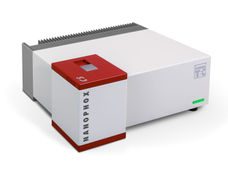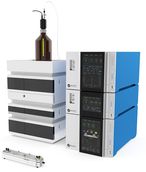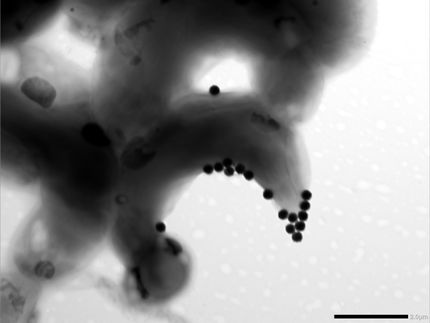Scented wax melts may not be as safe for indoor air as initially thought, study finds
As traditional candles burn, they can contribute to indoor air pollution by emitting volatile compounds and smoke, which may pose inhalation risks. Scented wax melts are often marketed as safer alternatives to candles because they’re flame- and smoke-free. But in a study,researchers describe how aroma compounds released from the melted wax can react with ozone in indoor air to form potentially toxic particles.

Researchers monitored the nanoparticles produced from scented wax melts using lab equipment set up inside a model home.
Purdue University/Kelsey Lefever
Previous research has shown that scented wax melts emit more airborne scent compounds than traditional candles. The direct heating of the wax maximizes its surface area, thereby releasing more fragrance – such as volatile organic compounds (VOCs) made of hydrocarbons – into the air. Researchers know that these chemicals can react with other compounds in the air to form nanometer-wide particles, which have been linked to negative health effects when inhaled. However, the potential for nanoparticle formation during wax-melt use was unknown. So, Nusrat Jung, Brandon Boor and colleagues set out to investigate this process using wax melts in a full-scale house model that mimicked a typical residential house.
The researchers conducted experiments on 15 commercially available wax melts, both unscented and scented (e.g., lemon, papaya, tangerine and peppermint), in the model house. They first established a baseline of indoor air pollutants and then switched on the wax warmer for about 2 hours. During and after this period, the researchers continuously sampled the air a few yards (meters) away from the wax melts and found airborne nanoparticles, between 1 and 100 nanometers wide, at levels that were comparable to previously reported levels for traditional, combustion-based candles. These particles could pose an inhalation risk because they are small enough to pass through respiratory tissues and enter the bloodstream, say the researchers.
Additionally, using literature data, the team calculated that a person could inhale similar amounts of nanoparticles from wax melts as from traditional candles and gas stoves. Previous studies have found exposure to high levels of nanoparticles in indoor air can be linked to health risks like decreased cognitive function and increased prevalence of childhood asthma.
In the experiments, the main VOCs emitted from the wax melts were terpenes, such as monoterpenes and monoterpenoids. The researchers identified that the airborne terpenes reacted with ozone and formed sticky compounds, which aggregated into nanoscale particles. However, after warming an unscented wax melt, the team observed no terpene emissions or nanoparticle formation, which suggests that these aroma compounds contribute to nanoparticle formation.
The researchers say this study challenges the perception that scented wax melts are a safer alternative to combustion-based candles; however, they emphasize that more toxicology research is needed on the risks of breathing in nanoparticles formed from wax melts.
Original publication
Most read news
Original publication
Satya S. Patra, Jinglin Jiang, Jianghui Liu, Gerhard Steiner, Nusrat Jung, Brandon E. Boor; "Flame-Free Candles Are Not Pollution-Free: Scented Wax Melts as a Significant Source of Atmospheric Nanoparticles"; Environmental Science & Technology Letters, Volume 12, 2025-2-3
Topics
Organizations
Other news from the department science
These products might interest you

NANOPHOX CS by Sympatec
Particle size analysis in the nano range: Analyzing high concentrations with ease
Reliable results without time-consuming sample preparation

Eclipse by Wyatt Technology
FFF-MALS system for separation and characterization of macromolecules and nanoparticles
The latest and most innovative FFF system designed for highest usability, robustness and data quality

DynaPro Plate Reader III by Wyatt Technology
Screening of biopharmaceuticals and proteins with high-throughput dynamic light scattering (DLS)
Efficiently characterize your sample quality and stability from lead discovery to quality control

Get the chemical industry in your inbox
By submitting this form you agree that LUMITOS AG will send you the newsletter(s) selected above by email. Your data will not be passed on to third parties. Your data will be stored and processed in accordance with our data protection regulations. LUMITOS may contact you by email for the purpose of advertising or market and opinion surveys. You can revoke your consent at any time without giving reasons to LUMITOS AG, Ernst-Augustin-Str. 2, 12489 Berlin, Germany or by e-mail at revoke@lumitos.com with effect for the future. In addition, each email contains a link to unsubscribe from the corresponding newsletter.




























































